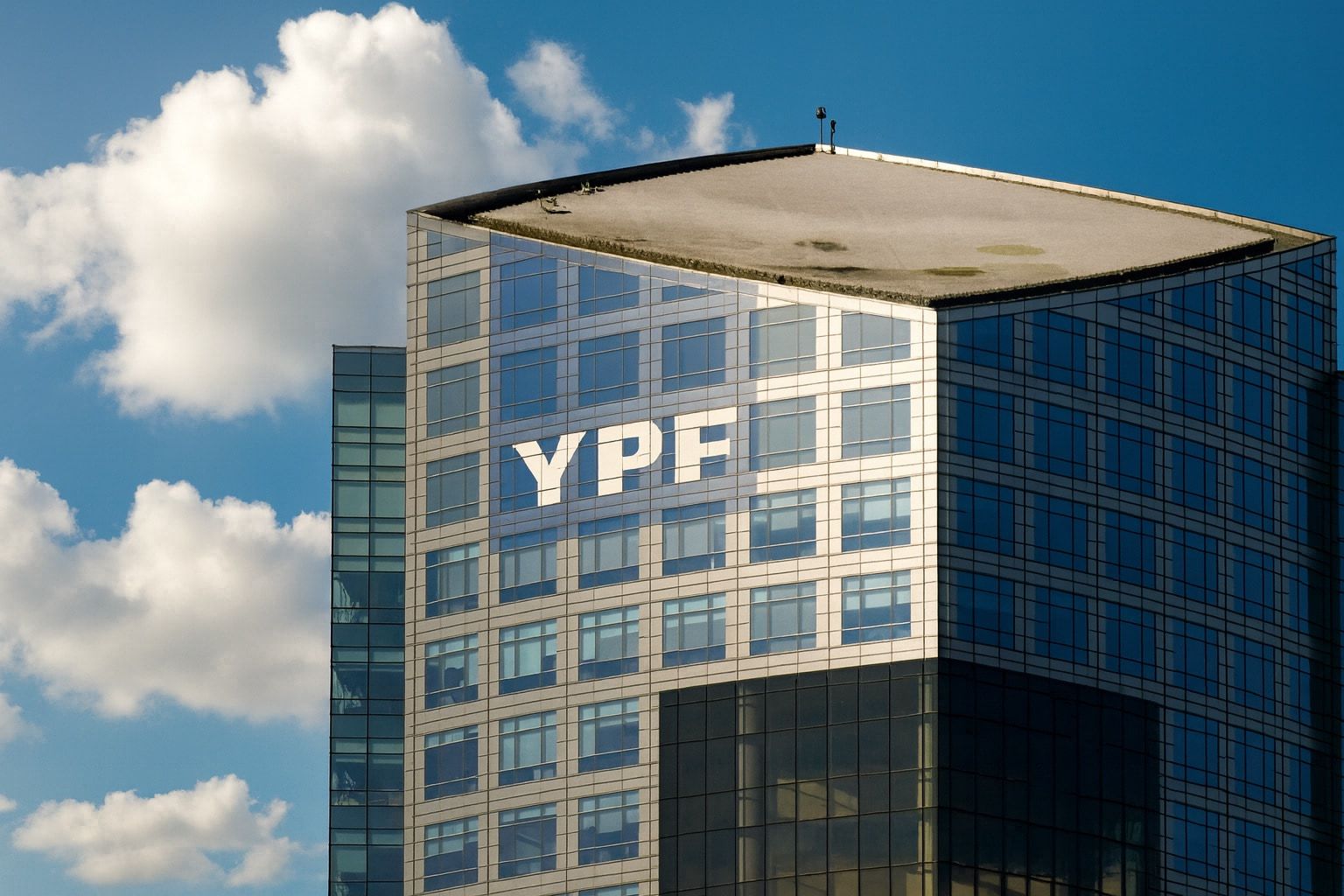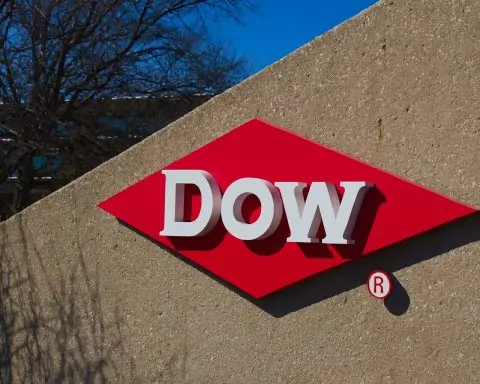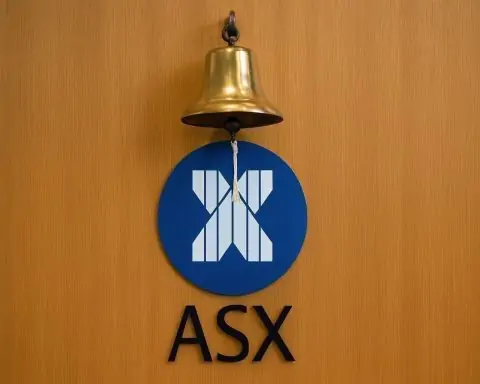- Stock Price & Performance: YPF Sociedad Anónima (NYSE: YPF) is trading around $27 per share as of late October 2025, up about 36% year-to-date [1]. The stock surged over 150% in 2024 amid Argentina’s market rally, hitting a 52-week high of $47.43 earlier this year [2], before pulling back to a recent low near $22.82 [3].
- Major Developments: A $16.1 billion legal judgment stemming from YPF’s 2012 nationalization loomed over the company this year, but in August a U.S. appeals court paused enforcement of that judgment, delaying any forced transfer of the government’s 51% stake in YPF to creditors [4]. Meanwhile, YPF and Italy’s Eni finalized a landmark LNG project deal in October 2025, paving the way for a huge investment to tap Argentina’s Vaca Muerta shale gas for export [5] [6]. YPF also completed a share buyback in mid-October as part of a board-approved plan, signaling confidence and aiming to enhance shareholder value [7].
- Investor Sentiment: Market sentiment on YPF remains cautiously optimistic. The election of libertarian President Javier Milei sparked euphoria – YPF’s New York shares soared 40% in one day after he vowed to privatize the firm [8] – and investors cheered his austerity and deregulation measures in 2024 [9]. Though Milei’s team later shelved full privatization plans to win support for broader reforms [10], his pro-business agenda continues. Milei’s party just scored a mid-term election victory, securing a legislative majority to push through economic reforms [11] [12]. Analysts say this lowers Argentina’s risk premium, potentially reducing YPF’s cost of capital and boosting long-term output [13]. Still, investors remain wary of Argentina’s challenges – including inflation (recently near 200% [14]) and currency volatility – as well as the unresolved legal saga.
Recent News & Developments
Milei’s Market-Friendly Agenda: Since taking office in December 2023, President Javier Milei has pursued aggressive free-market reforms that directly impact YPF and the energy sector. Early on, Milei floated plans to privatize YPF, igniting a buying frenzy in YPF’s stock [15]. “YPF was one of several state-controlled companies he plans to sell,” Milei declared after his election, aiming to “create value” in the company before a sale [16]. Global investors reacted swiftly – YPF’s U.S.-listed shares skyrocketed over 40% in a single session on Milei’s privatization comments [17]. However, by January 2024 the administration backed off privatization as it negotiated a massive reform bill in Congress [18]. YPF was dropped from the immediate sell-off list to help the reform package pass, reflecting political realities in Argentina’s Congress. Instead, Milei focused on loosening energy market regulations – eliminating state controls on oil and gas prices while retaining emergency powers to ensure supply [19].
Political Tailwinds: Nearly two years into Milei’s term, political momentum remains strong. In late October 2025, Milei’s coalition won crucial mid-term elections, gaining a wide enough margin “to secure his economic agenda” in the legislature [20]. His La Libertad Avanza party captured ~41% of the vote and carried key oil-and-gas-producing provinces [21] [22]. This victory “clears the way” for the next phase of structural reforms [23], reinforcing the pro-investment climate. It also cements alignment with pro-market policies – even backed by a new $40 billion U.S. support package to stabilize Argentina’s economy [24]. For YPF, Milei’s strengthened mandate means a stable outlook for business-friendly policies like tax breaks, infrastructure incentives, and potentially easier access to capital. The recent election outcome ended weeks of uncertainty and “ended speculation about future investments in major projects, including oil and gas pipelines and export facilities” in Argentina [25]. Investors in YPF likely view this as a green light for the company’s growth plans in the coming years.
Vaca Muerta LNG Mega-Project: A centerpiece of YPF’s growth strategy is the vast Vaca Muerta shale formation – and 2025 brought a breakthrough. On October 10, YPF and Italy’s Eni finalized an engineering agreement for a $40 billion liquefied natural gas (LNG) project to commercialize Vaca Muerta’s gas reserves [26] [27]. Under the deal, YPF will handle upstream development (an estimated 800 new wells to double gas output), while Eni will deploy floating LNG liquefaction units totaling 12 million tons/year export capacity [28]. “YPF will be responsible for the upstream, and we will be responsible for the floating liquefaction. We need to reach the market before 2029,” Eni’s CEO Claudio Descalzi explained [29]. YPF’s CEO detailed that the project requires roughly $25 billion in infrastructure plus $15 billion for upstream drilling [30]. This is arguably the largest investment project in Argentina’s history [31], positioning YPF at the heart of a future LNG export boom. The finalized deal in October immediately boosted market confidence – YPF’s stock jumped ~5–6% intraday on the news and optimism around Argentina’s “energy renaissance” [32] [33]. Investors see the LNG venture as transformative: it targets first exports by 2029 and could turn Argentina into a major gas exporter, bringing in coveted foreign currency. Notably, YPF and government planners aim to export 1 million barrels of oil per day and 30 million tons of LNG annually by 2030 as Vaca Muerta scales up [34] – an ambitious goal that underscores YPF’s long-term growth narrative.
Share Buyback and Corporate Moves: In addition to mega-projects, YPF has taken shareholder-friendly steps. The company completed a share buyback program in October 2025, purchasing 343,654 of its own Class D shares on the Buenos Aires exchange at an average AR$40,832 per share (about AR$14 billion total) [35]. This buyback, approved by YPF’s board, signals management’s confidence in the stock’s value and improves shareholder returns modestly by reducing float. It also coincided with insider and institutional positioning: though YPF is majority-owned by the Argentine state (51% stake), only around 10% of YPF’s float is held by institutional investors [36], meaning the stock’s moves can be driven by retail traders and local market sentiment. The buyback’s completion was seen as a positive sign that YPF’s cash flows are strong enough to return capital to investors even as it pursues large investments. However, it’s worth noting YPF’s latest earnings were mixed – the company posted earnings of $0.13 per share in Q2 2025, which missed analysts’ $0.56 forecast by a wide margin [37]. Revenue for that quarter slightly beat expectations at about $3.47 billion [38], and profit margins stayed positive (net margin ~6.3% [39]). The earnings miss suggests higher costs or ongoing fuel price controls earlier in the year may have weighed on profitability. YPF’s CFO indicated that improving operational efficiency and adjusting fuel prices are priorities to boost margins going forward. Investors will be watching the upcoming Q3 2025 earnings (due in early November) for signs that YPF is back on track with stronger profits as government policies (like fuel price liberalization) take hold.
Legal Saga Paused (For Now): A major overhang on YPF has been the multibillion-dollar lawsuit over its 2012 re-nationalization. In July 2023, a U.S. court ruled Argentina breached obligations when it seized YPF from Spain’s Repsol without properly compensating minority shareholders [40]. This led to a staggering $16.1 billion judgment against Argentina – and by mid-2025 U.S. District Judge Loretta Preska even ordered Argentina to relinquish its 51% YPF stake within 14 days to satisfy creditors [41] [42]. The prospect of Argentina forcibly losing control of its oil champion sent shockwaves through the market and cast a “shadow over the country’s shale hopes” [43]. YPF’s stock slumped over 5% on that ruling [44], as investors grappled with worst-case scenarios. Argentina’s government immediately appealed, calling the handover order unacceptable and vowing to “defend national interests” [45] – understandable, since YPF is crucial to Argentina’s plan to earn the hard currency the economy desperately needs [46]. As one risk consultant noted, “Control of YPF is important for Milei; that’s why an appeal is the only option… It should bring in the U.S. dollars the economy lacks” [47]. Indeed, many experts doubted the judgment would ever literally strip YPF away. “I find it unthinkable that a vulture fund would take over 51% of YPF’s shares,” said Victor Bronstein, an energy policy professor, calling the ruling leverage for a settlement rather than a realistic transfer of ownership [48]. This view gained credence in August when the U.S. Second Circuit Court of Appeals granted a stay, pausing enforcement of the $16.1 billion judgment [49]. The stay delays any seizure of YPF shares while Argentina pursues its appeal, which could take months or years. For Buenos Aires, this was a huge (if temporary) relief – Milei’s administration had warned that losing YPF would cause “irreparable” economic harm [50]. The legal battle isn’t over, but for now YPF has staved off an immediate $16 billion hit, buying time for a potential negotiated solution [51]. Investors have cautiously welcomed the reprieve; however, the case remains a key risk hanging over YPF’s valuation. As an Argentine economist noted, even the uncertainty is damaging: a company with unclear ownership is “in the midst of a crisis; it’s difficult to make decisions” under such conditions [52]. Until the appeals court definitively rules or a settlement is reached, this legal saga will continue to influence YPF’s risk profile and its stock’s behavior on global markets.
Stock Price Movements & Technical Trends
Volatile Ride: YPF’s stock has experienced a rollercoaster ride over the past two years, reflecting Argentina’s tumultuous economic backdrop and shifting investor expectations. After trading in the single digits just a few years ago, YPF’s U.S.-listed shares climbed dramatically through 2023 and 2024. The rally peaked in late 2023 when Milei’s election and talk of privatization triggered a frenzy – YPF jumped to the high-$40s per ADR, notching multi-year highs. In 2024, YPF rose over 150% as part of a broader Argentine stock surge “celebrated by market participants” due to Milei’s reforms [53]. However, 2025 brought some consolidation. The stock has pulled back ~40% from its highs amid profit-taking, global oil price fluctuations, and the overhang of the legal dispute. By October 2025, YPF found a floor in the mid-$20s. It set a 52-week low of $22.82 [54] during the late summer, when concerns about the court ruling and Argentina’s macro situation were most intense. Since then, it has rebounded into the high-$20s, suggesting improving sentiment and new catalysts (like the LNG deal news).
Technical Signals: On the charts, YPF’s recent price action hints at a possible trend shift. The stock bounced strongly off its lows – for example, on October 23 it spiked +5.8% intraday to around $26.20 [55] after the Vaca Muerta LNG announcement and positive policy news. This rally pushed shares back above short-term resistance levels. Traders note that YPF breaking above the $26.32 range (recent high) could signal a sustained short-term uptrend [56] [57]. Some technical indicators are turning favorable: relative strength index (RSI) mid-50s (neutral to slightly bullish), and the stock recently closed above its lower Bollinger Band toward the mid-band [58]. That said, YPF remains below its longer-term moving averages – its 50-day moving average is ~$27.5 and the 200-day is ~$33.2 [59] [60]. Trading well under the 200-day MA reflects that the stock is still in a long-term downtrend since the early-2024 peak. Chart analysts view the current bounce as a short-term bullish reversal within a broader corrective phase】 [61] [62]. In other words, momentum has improved lately, but YPF would need to clear the low-$30s to fully regain a bullish trajectory.
Volatility is another hallmark of YPF: the stock’s beta is around 1.7 [63], meaning it swings more sharply than the average market. Swings of 5–10% in a day are not uncommon, especially around major news. Options activity has also picked up – traders have been piling into calls expiring in November, positioning for short-term moves [64] [65]. For instance, open interest spiked in $27 strike call options as speculators bet on a continued rebound [66]. This suggests a segment of the market is looking for a near-term breakout (or hedging against one). On the flip side, high volatility (implied volatility near 95–100% on near-term options) means options carry rich premiums [67]. Investors should brace for rapid moves in YPF’s share price driven by news on politics, policy, or global oil prices.
Trading Volume & Liquidity: YPF’s average trading volume on NYSE is about 2.3 million shares per day [68], which gives it decent liquidity, though not as heavy as many U.S. energy majors. Volume tends to surge during market-moving events: for example, during the November 2023 post-election jump, volume was multiple times the average as global funds rushed in. We’ve also seen bursts of activity around legal rulings and economic announcements. The stock trades in both New York (ADR) and Buenos Aires (local shares), with arbitrage keeping prices in line (taking into account currency controls and exchange rates). One factor for traders to watch is the Argentine peso’s trajectory – a sharp devaluation can weigh on YPF’s local share price (in peso terms) and create dislocations with the ADR. So far in 2025, improved confidence (and external support like the U.S. credit line [69]) has helped stabilize the peso somewhat, which in turn stabilized YPF’s local share performance. International investors primarily focus on the NYSE listing for liquidity and transparency. Overall, YPF’s trading pattern reflects a high-beta emerging market stock: sensitive to news, capable of big moves, but supported by underlying asset value in one of the world’s largest shale reserves.
Market Sentiment & Analyst Views
Mixed Analyst Outlook: Wall Street’s view on YPF is cautiously optimistic but mixed, reflecting the balance of huge potential and significant risk. According to MarketBeat data, the stock currently carries an average rating of “Hold” [70]. Out of 8 analysts tracked, 3 recommend “Buy”, 5 recommend “Hold”, and 1 rates it “Sell” [71]. The average 12-month price target is about $43.60 per share [72], implying ~60% upside from current levels – a bullish signal that many see YPF as undervalued if it can navigate the risks. The highest analyst target sits around $55, while the lowest are in the mid-$20s [73], highlighting the divergence in views. Notably, JPMorgan Chase & Co. remains upbeat, maintaining an “overweight” rating on YPF. In mid-October, JPMorgan trimmed its target price slightly from $47 to $44, but affirmed that it sees “possible growth despite current challenges” [74] [75]. JPMorgan’s analysts believe YPF’s strong position in Argentina’s energy sector – especially its shift from conventional oil to prolific shale assets – can drive substantial growth as the country’s economy opens up [76]. They more than doubled their price target at the start of 2025 (from $25 to $59.50) after Milei’s reforms began, arguing it’s “not too late to invest in Argentina oil and gas” and calling the sector “a very interesting space for equity investors in 2025” [77] [78]. That bullish thesis rests on YPF being a prime beneficiary of Argentina’s “economic transformation” under market-friendly policies [79].
On the other hand, some analysts urge caution. Zacks Investment Research had long been bearish on YPF but just upgraded the stock from a “Strong Sell” to a “Hold” on October 26, 2025 [80]. The upgrade to neutral reflects a less pessimistic outlook now that YPF’s situation has improved (e.g. legal enforcement stayed, political climate favorable). Similarly, Weiss Ratings reiterated a middling “Hold (C)” rating [81], indicating average fundamentals and risk. These tempered stances suggest that while YPF’s upside is real, the uncertainties keep some analysts on the sidelines. The company’s recent earnings miss also gave analysts pause – it underscored execution risks and Argentina’s volatile conditions. Still, even neutral observers acknowledge that YPF’s valuation is low relative to its asset base and peers, if one assumes the macro and legal clouds will clear.
Quotes from Experts: Market experts frequently comment on YPF given its prominence. Global X’s analyst Trevor Yates noted that YPF’s big post-election jump in 2023 was driven by “the increasing likelihood of it being privatized and [implementing] an international price parity policy” on fuel [82]. In other words, investors anticipated that Milei would let YPF charge market prices for oil/gas (ending subsidies) and perhaps sell part of the company to strategic partners, boosting profitability. Yates added that a “lower risk premium in the country… should also reduce its cost of capital and favor output in the medium and long term” [83]. This encapsulates the bull case: as Argentina stabilizes economically, YPF could attract investment more cheaply and expand production more easily, driving growth.
At the same time, risk consultants emphasize the flip side. Marcelo Garcia of Horizon Engage warned that political control of YPF is paramount: “Control of YPF is important for Milei; that’s why an appeal [of the court ruling] is the only option… It should bring in the U.S. dollars the economy lacks” [84]. His point was that YPF is one of Argentina’s few engines for export revenue (critical for a country with scarce dollars), so the government must retain it – a reminder that YPF’s fortunes are tightly entwined with national interests. Another Argentine economist, Agustín Monteverde, highlighted how the legal uncertainty itself can hurt YPF’s operations: “A firm whose majority shareholder is unclear is… in the midst of a crisis; it’s difficult to make decisions” [85]. This speaks to the paralysis that large overhangs (like a potential ownership change) can induce – possibly delaying projects or deterring partnerships until resolved. Such commentary explains why some analysts won’t fully endorse YPF stock until the legal case and Argentina’s fiscal woes are settled.
Investor Behavior: Among investors, sentiment is split between brave bargain-hunters and those taking profits after a huge run-up. Domestic Argentine investors and many retail traders remain bullish on YPF as a national champion and a proxy for the country’s recovery. They’ve been heartened by Milei’s clear support for YPF’s core mission (even if outright privatization is off the table for now) and by strategic moves like the Eni deal. Internationally, emerging-market funds have cautiously increased exposure to YPF, especially following the appeals court stay on the judgment. The stock’s valuation – roughly 3.5 times trailing earnings and under 1x book value by some measures – is seen as extremely cheap if Argentina normalizes. However, some of last year’s euphoria has cooled. After the initial “easy gains”, which one analyst said are gone, YPF is now “about performance” and execution [86]. This means investors will be focusing on concrete results: production volumes, cash flow, debt management, and how effectively YPF can capitalize on Vaca Muerta. The trading community is actively discussing YPF’s next moves on platforms like Stocktwits and X (Twitter). Notably, YPF often trades in tandem with Argentine economic news – for example, any sign of progress with the IMF or new foreign investment can lift the stock, whereas any resurgence of capital controls or political instability can hurt it.
Overall, the market mood around YPF has evolved from speculative fervor in late 2023 to a more nuanced optimism in late 2025. Investors now see a path for YPF to truly grow and unlock value, but they are also acutely aware of the risks and roadblocks that could derail it.
Forecasts and Risk Analysis
Growth Potential: The consensus among experts is that YPF has significant upside potential if things go right. The average analyst target of ~$44 [87] suggests potential for robust gains. Bulls argue that YPF, as Argentina’s largest integrated energy company, is positioned to ride a wave of growth from the Vaca Muerta shale – often compared to the Permian Basin in terms of scale. Under President Milei’s pro-industry policies, YPF is ramping up drilling and improving efficiency. The company is also pursuing partnerships (like the Eni LNG venture and joint projects with majors such as Shell and Chevron in Vaca Muerta [88]) to accelerate development. If Argentina’s macro situation stabilizes – lower inflation, a steadier peso, improved foreign reserves – YPF’s earnings could soar due to higher export volumes and pricing freedom domestically. Some forecasts see production doubling over the next 5 years, which, coupled with cost-cutting, could dramatically boost EBITDA. Long-term, YPF’s vision of becoming a key LNG and oil exporter by 2030 (with 1 million barrels/day oil and 30 MTPA LNG targets [89]) hints at a transformational decade ahead. It’s no surprise JPMorgan and other bullish analysts foresee further stock gains as this story unfolds. They point out YPF is trading at a fraction of the valuation metrics of global oil firms, despite owning world-class resources. For instance, YPF’s market cap is around $10–11 billion [90] [91] while it holds rights to one of the biggest shale reserves on the planet – a disconnect that could correct if investor confidence in Argentina improves.
Key Risks: That said, risks abound and warrant careful consideration. First and foremost is the legal overhang: the $16.1 billion judgment (plus accruing interest) is enormous – comparable to YPF’s entire market value. If Argentina’s appeal ultimately fails without a settlement, the enforcement of that judgment could be financially devastating. While an outright seizure of the 51% YPF stake is unlikely (and would require political steps even within Argentina [92]), the plaintiffs could pursue other assets or payments that strain YPF or the state’s finances. The uncertainty will likely persist well into 2026 as the case winds through appeals. Investors should monitor any signals of a negotiated settlement (perhaps Argentina paying a reduced sum) which could remove this cloud.
Another major risk is Argentine macroeconomics. Inflation remains extremely high (hovering in triple digits annually), and the currency has a history of sharp devaluations. Either can eat into YPF’s earnings: domestic fuel prices and costs are in pesos, and government interventions (like freezing pump prices to curb inflation) can squeeze YPF’s profit margins, as seen in past quarters. Milei’s reforms aim to curb inflation and have included a one-time currency reform proposal (dollarization talk), but the timeline and success are uncertain. Should inflation stay elevated or the peso plunge, YPF might face challenges converting local earnings to dollars or might need to continually raise prices to keep up – potentially hitting demand or drawing political backlash. Financing risk is related: YPF carries substantial debt (as do many oil companies), and Argentina’s country risk can make refinancing costly. A lower country risk premium, as noted by analysts [93], is crucial – if Milei’s policies falter or political risk resurfaces (e.g. social unrest against austerity), borrowing costs for YPF could spike and foreign investment could dry up.
Additionally, operational risks shouldn’t be overlooked. Developing Vaca Muerta is capital-intensive and technically challenging. YPF must execute on drilling those 800 new wells for the LNG project [94], expand infrastructure like pipelines and processing facilities, and do so efficiently. Any delays or cost overruns (common in mega-projects) could hurt projected cash flows. For example, the $40B LNG project will likely require phased investments and reliable partnership with Eni – any hiccup there would be concerning. YPF also still has to contend with energy price volatility. While Argentina is somewhat insulated on gas prices due to local market structure, oil prices globally affect YPF’s export revenues. In mid-2025, oil prices dipped (Brent around $66 [95]) on oversupply fears, which can limit YPF’s cash generation. A sustained period of low oil/gas prices would make it harder for YPF to fund its growth ambitions without tapping debt or equity markets. Conversely, higher oil prices could be a boon, but also might tempt the government to intervene (for instance, by imposing export taxes or forcing lower domestic fuel prices to contain inflation).
Investor Profile & Behavior: Given these cross-currents, YPF likely remains a higher-risk, higher-reward play. It appeals to investors with a tolerance for emerging market volatility and a long-term conviction in Argentina’s turnaround. Those investors are betting that current headwinds (legal issues, inflation) will be resolved in a way that unlocks the massive value of YPF’s assets. In the near term, sentiment will ebb and flow with news. Any positive step – e.g. hints of a legal settlement, successful debt deals, improved earnings, or further pro-investment policies – could send the stock rallying. Already, expert signals are turning more positive: Zacks upgrading YPF’s rating this week from sell to hold indicates improving outlook [96], and JPMorgan’s continued overweight stance underscores institutional confidence [97]. On the flip side, investors will be quick to sell if Argentina’s progress slips. A warning sign would be if Milei’s reforms stall or if the government backtracks on energy policies (for instance, re-imposing price caps or failing to honor contracts). Moreover, any adverse court developments in the U.S. could rekindle fears.
Bottom Line – Outlook: YPF’s story heading into 2026 is one of guarded optimism. The company stands at the nexus of Argentina’s hopes for an energy boom and economic revival. It has world-class oil and gas assets and is now forging international partnerships to monetize them. The political winds are currently favorable, blowing in pro-market changes that were unthinkable a few years ago. For international investors, YPF offers exposure to this turnaround tale – with the allure of potentially outsized returns if Argentina’s fortunes improve. However, the journey will not be smooth. As an oil executive might say, YPF must drill through layers of “above-ground risk” before it can fully tap the riches below. Investor vigilance is key: one must track Buenos Aires as closely as the oilfields. In the coming months, watch for news on the court appeal, YPF’s operational updates (especially on Vaca Muerta development milestones), and Argentina’s macro indicators. Each will shape the trajectory of this stock.
For now, YPF’s outlook is promising but not without peril. In the words of one industry observer, the easy gains have already been made – from here on, it’s about execution and performance [98]. If YPF delivers and Argentina stays on the reform path, the stock could very well reclaim its highs and beyond. If not, volatility will remain the norm. Investors in YPF should buckle up for the ride – it’s a bet on Argentina’s oil champion that combines high-stakes risk with potentially high reward, a combination the market is increasingly willing to explore as the country’s new chapter unfolds.
Sources: Official financial news and filings, TechStock² (ts2.tech) business reports [99] [100], Reuters news wires [101] [102], MarketBeat analyst coverage [103] [104], and Argus Media Argentina market insights [105] [106]. All information is current as of October 27, 2025.
References
1. finance.yahoo.com, 2. www.marketbeat.com, 3. www.marketbeat.com, 4. ts2.tech, 5. www.reuters.com, 6. www.reuters.com, 7. www.barchart.com, 8. www.reuters.com, 9. www.reuters.com, 10. www.argusmedia.com, 11. www.argusmedia.com, 12. www.argusmedia.com, 13. www.reuters.com, 14. www.reuters.com, 15. www.reuters.com, 16. www.reuters.com, 17. www.reuters.com, 18. www.argusmedia.com, 19. www.argusmedia.com, 20. www.argusmedia.com, 21. www.argusmedia.com, 22. www.argusmedia.com, 23. www.argusmedia.com, 24. www.argusmedia.com, 25. www.argusmedia.com, 26. www.reuters.com, 27. www.reuters.com, 28. www.reuters.com, 29. www.reuters.com, 30. www.reuters.com, 31. argentina-lng.ypf.com, 32. www.ainvest.com, 33. www.ainvest.com, 34. www.argusmedia.com, 35. www.barchart.com, 36. www.marketbeat.com, 37. www.marketbeat.com, 38. www.marketbeat.com, 39. www.marketbeat.com, 40. www.reuters.com, 41. www.reuters.com, 42. www.reuters.com, 43. www.reuters.com, 44. www.reuters.com, 45. www.reuters.com, 46. www.reuters.com, 47. www.reuters.com, 48. www.reuters.com, 49. ts2.tech, 50. ts2.tech, 51. ts2.tech, 52. www.reuters.com, 53. www.reuters.com, 54. www.marketbeat.com, 55. www.ainvest.com, 56. www.ainvest.com, 57. www.ainvest.com, 58. www.ainvest.com, 59. www.ainvest.com, 60. www.ainvest.com, 61. www.ainvest.com, 62. www.ainvest.com, 63. www.marketbeat.com, 64. www.ainvest.com, 65. www.ainvest.com, 66. www.ainvest.com, 67. www.ainvest.com, 68. www.barchart.com, 69. www.argusmedia.com, 70. www.marketbeat.com, 71. www.marketbeat.com, 72. www.marketbeat.com, 73. www.marketbeat.com, 74. www.marketbeat.com, 75. www.marketbeat.com, 76. www.reuters.com, 77. www.reuters.com, 78. www.reuters.com, 79. www.reuters.com, 80. www.marketbeat.com, 81. www.marketbeat.com, 82. www.reuters.com, 83. www.reuters.com, 84. www.reuters.com, 85. www.reuters.com, 86. seekingalpha.com, 87. www.marketbeat.com, 88. www.reuters.com, 89. www.argusmedia.com, 90. www.marketbeat.com, 91. www.barchart.com, 92. www.reuters.com, 93. www.reuters.com, 94. www.reuters.com, 95. ts2.tech, 96. www.marketbeat.com, 97. www.marketbeat.com, 98. seekingalpha.com, 99. ts2.tech, 100. ts2.tech, 101. www.reuters.com, 102. www.reuters.com, 103. www.marketbeat.com, 104. www.marketbeat.com, 105. www.argusmedia.com, 106. www.argusmedia.com










